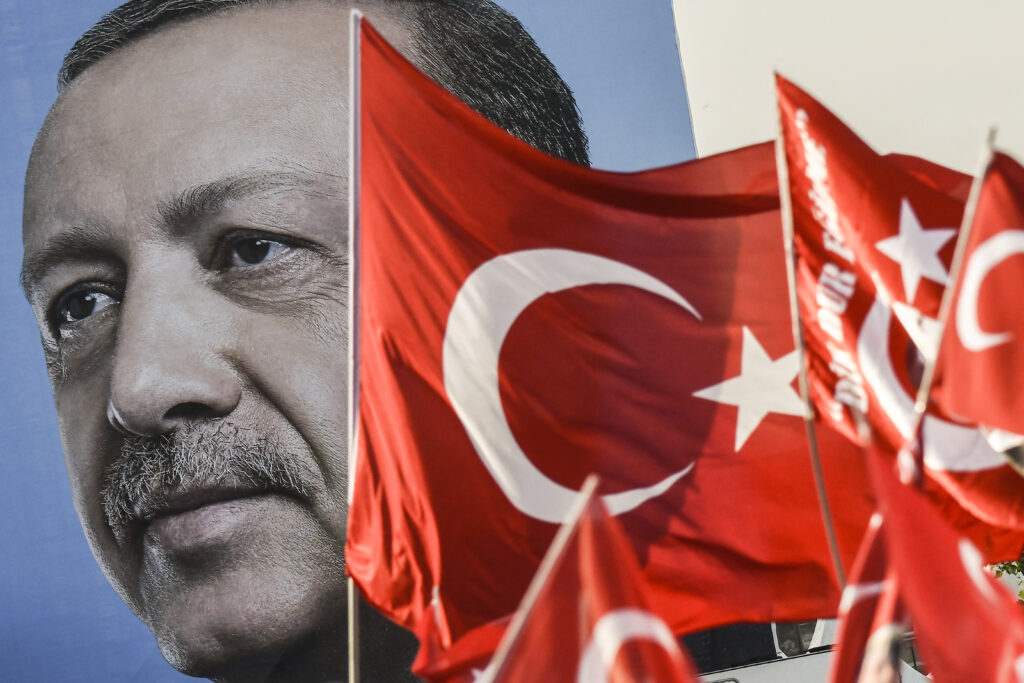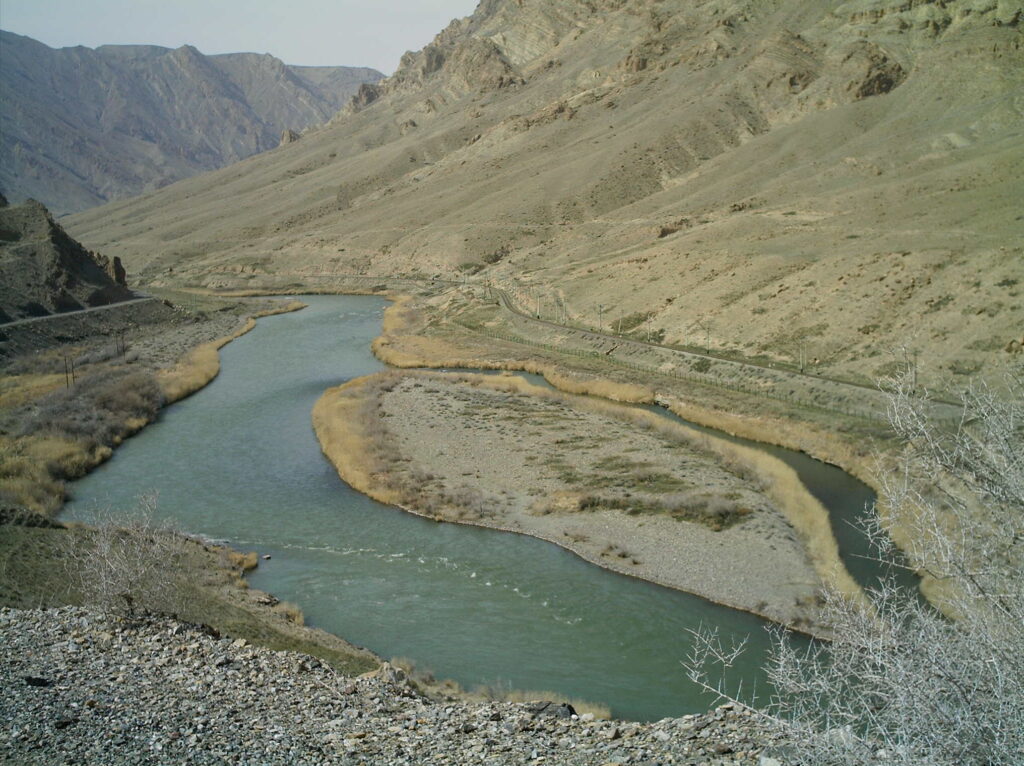Turkey has been among the beneficiaries of the shifting power dynamics in the Middle East triggered by Israel’s war against Hamas, and the fall of the Assad regime in Syria. Earlier this year, Abdullah Ocalan, the imprisoned founder of the Kurdish Workers’ Party (PKK), issued a call for the group to disband and disarm. Two weeks later, in Syria, the PKK-affiliated and US-backed Syrian Democratic Forces (SDF) agreed to integrate “all civil and military institutions” into the interim government led by Hayat Tahrir al-Sham (HTS) and President Ahmed Al Sharaa. Concurrently, preparations are underway for the Turkish-led Development Road infrastructure project in Iraq.
Collectively, these developments signal Turkish ambitions to create a sphere of influence in Syria and Iraq. This will constrain Kurdish opponents and Iran while consolidating Turkish economic interests in the Middle East. This goal will be achieved in two ways.
First, PKK’s disbandment and SDF’s integration into the Syrian interim government neutralises threats to Turkish security, while also preventing Iranian infiltration. This grants Turkey considerable influence over Syria. Second, the Development Road project in Iraq secures Turkish economic influence in Iraq and over Europe-Asia trade flows while fracturing Kurdish unity and sidelining Iran.
Removing Proximate Threats
The neutralisation of Kurdish threats allows Turkey to expand its influence in Syria. Ankara considers the PKK and SDF to be linked. These links originated during the Syrian Civil War, when PKK members joined the Syrian Kurdish Democratic Union Party (PYD) and its military wing, the People’s Protection Units (YPG). Both the PYD and YPG are dominant militias in the SDF, the military of an autonomous Syrian Kurdish state known as the Autonomous Administration of North and East Syria (AANES), or Rojava. SDF Commander-in-Chief Mazloum Abdi was also a PKK member who worked with Ocalan.
The latest Turkish attempts to neutralise Kurdish threats began in October 2024, when Ankara pushed for the PKK’s disbandment, hinting at the prospect of greater Kurdish political representation in Turkish politics — this was a significant factor behind Ocalan’s announcement. Strategically, the PKK’s disbandment isolates the SDF, which faces attacks from the Turkish military and Turkish-allied Syrian National Army (SNA). The SDF may even lose support from the US, which has announced plans to withdraw from Syria. These factors explain why, two weeks after Ocalan’s call, the SDF agreed to integrate into the interim Syrian government.
The potential neutralisation of the PKK and SDF resolves serious threats to Turkish security. The four-decade-long PKK insurgency claimed over 40,000 lives. For a time, Ankara’s foremost concern was that the PKK would use SDF territory as launchpads for attacks against the country — in 2015, PKK militants seized control of Kurdish-majority cities in south-east Turkey, close to the Syrian border, leading the Turkish military to shell entire neighbourhoods.
Reported Iranian support amplifies the Kurdish threat. Although not a part of Iran’s Axis of Resistance, the PKK has relations with the Iranian Revolutionary Guard Corps (IRGC). Before Ocalan’s call to disband, a Turkish newspaper reported that Tehran sent 1,500 Shahed drones to the PKK, a claim Iran denied. IRGC Quds Force General Esmail Qaani also reportedly held talks with SDF Chief Mazloum Abdi in January 2025 as Iran attempted to re-establish influence in Syria through the SDF. The PKK’s disbandment and SDF integration therefore closes the doors to Iranian influence, while allowing Turkey the opportunity enhance its influence in Syria.
Turkey has close ties with the HTS interim government and the SNA, the most dominant Syrian groups. As the Syrian civil war reached its denouement, Turkey armed HTS with drones and advanced weaponry that helped it capture Damascus. It also trained and coordinated SNA factions in their battle against Assad. The SDF’s integration thus removes opposition to Turkish-backed entities in Syria, consolidating Ankara’s political influence.
As importantly, these developments further Turkey’s economic ambitions in Syria. Since Syria’s oil and gas fields are concentrated within areas controlled by the SDF, its integration removes political obstacles to Turkish aspirations of energy autonomy and even becoming a supplier to Europe.
Development Road in Iraq
In Iraq, meanwhile, the Development Road project adds to Turkey’s security and bolstered influence in the region. Finalised by President Recep Tayyip Erdogan in 2024, the project is projected to cost between US$17 billion and US$20 billion, and will comprise rail and road networks allowing Europe-Asia trade to flow from Persian Gulf ports into southern Iraq and northwards into Turkey and the Mediterranean. The project has also received support from the United Arab Emirates and Qatar,
If successful, the Development Road will allow Turkey to secure economic and military influence in Iraq. By opening Iraqi access to international trade, the project promises to generate 100,000 jobs and US$4 billion in revenue, making Baghdad more economically beholden to Turkish interests. On the other side of the ledger, it complements Iraqi goals of oil diversification and infrastructure development to repair decades of war. Unsurprisingly, Iraq has been receptive to Turkish proposals: In 2024, Mr Erdogan signed more than 20 memoranda of understanding with Iraqi Prime Minister Mohammed Shia al-Sudani.
The project also has strategic value, allowing Turkey to constrain Kurdish and Iranian threats. It creates a land corridor severing links between Iraqi Kurds in the East and Syrian Kurds in the West, suffocating a potential united Kurdish insurgency. It also isolates Iraqi Kurdistan, as the planned infrastructure projects bypass the autonomous Kurdish Regional Government in Iraq’s northeast.
Turkey has also been expanding its military presence in Iraq, establishing bases in the northern part of the country, which is close to Iran and the Kurdistan region. The “Shia Crescent”, already in tatters as a result of Israel’s decimation of Hezbollah and Assad’s overthrow in Syria, will be impacted by these moves, which could possibly cause a further fracturing of Tehran’s lines of communication and logistical routes. The increased Turkish military presence in Iraq could also constrain the manoeuvrability of Iranian-backed militias such as the Iraqi Popular Mobilisation Forces (PMF).
High Risks Ahead
However, Ankara’s grand designs are not risk-free. For one, while the PKK’s disbandment is underway, radical factions could disagree with Ocalan’s call and go their own way. More importantly, Kurdish political representation post-PKK disbandment is not assured. The Turkish government’s recent arrest of Istanbul Mayor Ekrem Imamoglu, the opposition’s choice to stand against Mr Erdogan in widely-anticipated early presidential elections ahead of the 2028 deadline, has sparked doubts over Ankara’s commitment to Kurdish political representation, and could convince the PKK to halt disbandment.
In Syria, Turkish influence could be constrained if the SDF fails to disband and integrate its institutions fully into the interim government. One unresolved issue is the SDF’s armed factions, such as the YDG, which have not yet disarmed.
Ankara has thus increasingly sought to coercively accelerate the PKK’s and SDF’s disbandment. While the Turkish government has continued peace-making initiatives with Ocalan, it concurrently replaced elected pro-Kurdish mayors in Turkey with state officials to weaken the overall Kurdish movement. Furthermore, the Turkish military has pursued air strikes against SDF positions to forcibly accelerate disbandment.
Moreover, Iran could still wreak havoc by using surviving Axis of Resistance militias such as the PMF to restrict Turkish influence in Iraq. Tehran could also assert influence over Baghdad by capitalising on lingering Iraqi concerns over excessive Turkish military intervention.
Recognising this, Turkey has warned Iran against promoting instability. After an interview in February, a diplomatic row broke out when Turkish Foreign Minister Hakan Fidan warned Iran that “other countries” could incite groups within the country, highlighting the tensions between both sides.
Despite their protestations, however, Iran is weakened, facing a constrained Axis of Resistance, dire economic problems, and mass societal dissatisfaction while simultaneously under increasing pressure from President Donald Trump. The myriad threats facing the Islamic Republic could leave it distracted and with fewer cards to play in resisting Turkish attempts to broaden its sphere of influence, providing Ankara with a fairly clear path to pursue its strategic goals.
Image Caption:
About the Author
Huzeir Ezekiel Dzulhisham is a Research Analyst in the Dean’s Office at the S. Rajaratnam School of International Studies (RSIS), Nanyang Technological University (NTU), Singapore.





